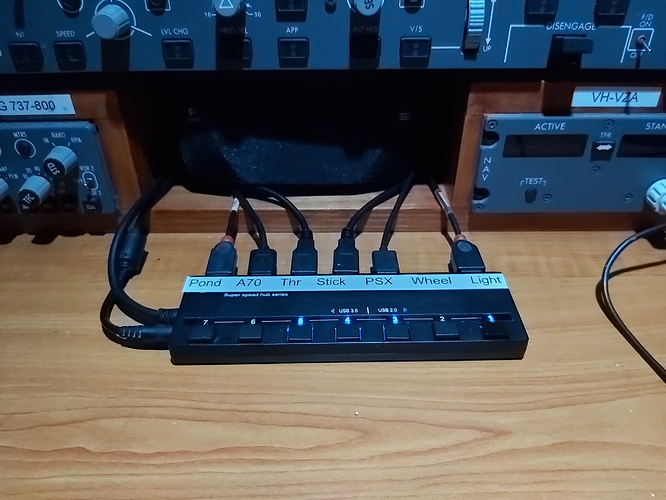USB ports on my computer are disappearing fast as I add controllers, particular those on the front of my computer as my computer set up (BIG dining room table in big kitchen “breakfast” nook) requires a much longer cable run to get to the rear of the computer.
So I’ve already been using a very functional switchable USB hub to control other devices, i.e., barcode scanner, label printer, high-speed paper scanner, USB array mike. Amazon.com
My question is two-fold. Is a USB hub going to significantly affect controller performance, e.g., lag time, in any way? (I suspect not as Thrustmaster has a scheme for plugging their TFRP rudder pedals into their H.O.T.A.S. flight sticks and advertises their setup as saving USB ports).
The second part of my question is does leaving a controller plugged into a computer forever, whether one is gaming or not, have any noticeable effect on the hardware lifespan of the average controller. The nice thing about the Sabrent USB hub that I reference is that individual USB ports on the hub can be turned on or off, there is a nice blue LED light for each switch for On/Off status, and the whole port is AC-powered (and gets rather warm in use!). Not an ad for the device. I’m just a happy purchaser and would like to know if another one would be a good idea for the mess of controllers now connected to my computer (with more to come! - Honeycomb yoke and separate throttle quadrant I hope when the feeding frenzy for these has died down). If there is a better, more popular USB hub, I’d like to know about it and would get that instead as my second USB hub for the computer.
Thanks for any helpful advice!
